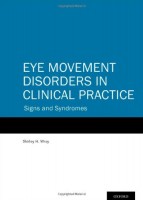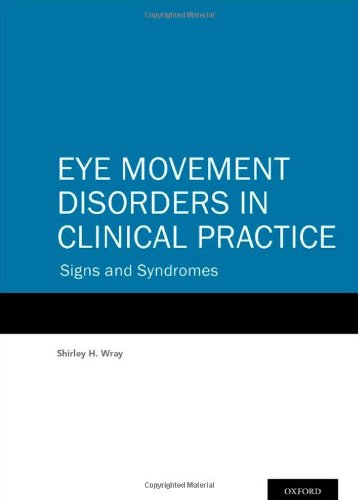 Author: Shirley H. Wray, MD, PhD, FRCP
Author: Shirley H. Wray, MD, PhD, FRCP
Publisher: Oxford University Press – 437 pages
Book Review by: Nano Khilnani
Shirley H. Wray has written this book from her experience over several decades as a neurologist and neurophysiologist focused on treating patients with various eye movement disorders. She has also been teaching neurology, besides practicing it.
She points out that while eye movement disorders are commonly encountered in practice, they are not that easy to treat and cure, and they bring up many questions that are not easy to find answers for.
Dr. Wray writes that she has taken a clinical approach in this book, even as the contents – many aspects of eye movement disorders – can be found in relevant literature. This book has been written with neurologists and neurosurgeons in mind, but she hopes that students and practitioners of other disciplines – such as ophthalmology, neuro-oncology, neuro-otology, neuro-pediatrics, and internal medicine – will find her approach useful.
This book has extensive coverage of eye movement disorders as they relate to the brain, and to give you an overview of the coverage, here below are the titles of its chapters, which will tell you at a single glance whether you will (or won’t) find what you are looking for:
- How the Brain Moves the Eyes
- The Eyelid and Its Signs
- Ptosis and Neuromuscular Syndromes
- The Extraocular Muscles and Diplopia
- Cranial Nerves Three, Four, Six, and Their Syndromes
- Horizontal Gaze and Syndromes of the Pons
- Vertical Gaze and Syndromes of the Midbrain
- Dizziness, Vertigo, and Syndromes of the Medulla
- The Cerebellum and Its Syndromes
- Oscillopsia, Nystagmus, Saccadic Oscillations, and Intrusions
Besides the materials found in this book, you’ll find other content online on at least two sites:
- http://Novel.utah.edu – videos on a variety of eye movement disorders
- http://Repository.Countway.Harvard.edu/Wray – her collection at the Harvard Medical School Countway Library.
This book is valuable because of the following features found in all its chapters, making for an organized, systematic presentation of material, and some unique items not found elsewhere:
- An introductory patch of text at the beginning of each chapter that presents what is covered in a given chapter, saving time and reading effort if you’re not looking to read on that topic
- Orderly discussion of the topics and subtopics in the chapters
- Provision, with captions, of drawings of anatomical parts that are clearly labeled
- Boxes on a given topic with bullet points. For example chapter 1 provides a box entitled Clinical Points to Remember About Lesions of the Frontal Cortex
- Cases from real life that give the students previews of what they may encounter in their practice. For example, in chapter 1, Case 1-1 is presented, entitled Pick’s Disease: Fronto-Temporal Dementia in which a 68-year-old, retired, right-handed man who was examined was found to have a one-year history of progressive behavioral changes: What were they?
- His writing had become less legible
- His speech was slow and hesitant
- He was unable to balance the checkbook
- When answering a question, he had to repeat the question before giving an answer
- He denied any visual symptoms (of degeneration) except trouble judging space and distance, having had a minor car accident once when he drove 100 feet in reverse and hit the garage door.
- He demonstrated many instances of slowness of movement, so his motor ability was impaired.
- With regards to his eyes, it was found that he had a saccades disorder, wherein his eye movements were fast. Wikipedia informs us that saccades are quick, simultaneous movements of both eyes in the same direction. Initiated cortically by the frontal eye fields (FEF), or subcortically by the superior collicus, saccades serve as a mechanism for fixation, rapid eye movement and the fast phase of optokinetic nystagmus. Saccades involve a succession of discontinuous individual movements.
This is a very useful book and unique in the sense that it has a lot of information, rarely found elsewhere, on the role and influence of the brain and the nerves on eye movement disorders.
Shirley H. Wray, MD, PhD, FRCP is Professor of Neurology at Harvard Medical School, and Director of the Unit for Neurovisual Disorders ay Massachusetts General Hospital.







